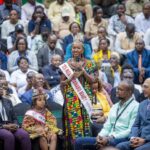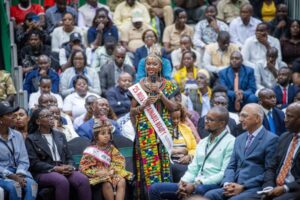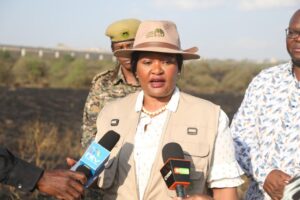Here is the full breakdown of how Sh1.3 billion was spent in the fight against Covid-19 pandemic in Kenya.
The expenditure is from the Sh1 billion donated by the World Bank for emergency response, including procurement of Personal Protective Equipment (PPEs), medicines and setting up of isolation facilities.
Although the approved budget was Sh976.8 million, the Ministry of Heath has spent Sh1.3 billion since the outbreak in mid-March, a government document shows.
“The excess expenditure will be drawn from additional funds from the World Bank. Contracts have already been entered into for the above procurements,” states the document.
Currently, the ministry is awaiting release of additional Sh2.3 billion from the World Bank to support the response for the remainder of this financial year.
The Health Ministry has spent Sh42 million to lease 15 ambulances at Sh2.8 million each.
At least Sh10.1 million has been earmarked for tea and snacks for various teams involved in combating the pandemic, with Sh4 million already spent.
And, the government has spent Sh9 million in printing of travellers’ quarantine and discharge forms against the Sh900,000 initial budget.
Another Sh14.4 million has been spent on fuelling and maintaining vehicles. Some Sh40,000 was spent per week in running each of the 30 vehicles.
Sh6 million has been set aside for airtime for 500 critical staff, with the ministry estimated to provide Sh4,000 for each of the officers per month for three months. Up to Sh2 million has since been spent since the outbreak in mid-March.
The document by Health Cabinet Secretary Mutahi Kagwe to the National Assembly Health committee, also shows the ministry spent Sh70 million in communications.
The ministry had approved a budget of Sh2.5 million for printing of papers, but has since spent Sh6.5 million since the outbreak.
The ministry further spent Sh11.8 million to procure and install call centres for grievances and complaints. It said the installation of the centres was a mandatory safeguard requirement by the World Bank.
The ministry has also earmarked Sh13.5 million to provide accommodation for 30 healthcare workers who require quarantine services for 90 days. A total of Sh2 million has already been spent.
From the same kitty, Kenya Medical Supplies Authority (Kemsa), which is under the Health ministry, has also spent Sh277.9 million in procurement of PPEs.
The agency had planned to spend Sh132.6 million to purchase the equipment. It has additionally spent Sh197 million to purchase Roche test kits, while another Sh98.8 million has also been spent to procure other testing equipment.
A spending plan of an additional Sh2.3 billion the ministry will receive from the World Bank shows Sh975 million is earmarked for isolation and treatment facilities.
Some Sh573 million will be spent on case management, surveillance and rapid response (Sh190 million), blood safety (Sh154 million) and waste management (Sh148 million).
Other expenses are lab reagents and sample collection kits (Sh101 million), Facility PPE (Sh11 million), lab PPE (Sh10 million), lab equipment (Sh65 million), and operations Sh38 million.
On mass testing, the report projects testing of initial 50,000 individuals in the next two weeks (April 27 to May 3).
Four labs Five counties with confirmed local transmission target supermarket and Public Service Vehicles workers, market vendors and individuals who interact with a high number of people per day.
The report says the Ministry of Health plans to ensure the testing capacity exceeds 37,000 per day.
In Kemri, the laboratories have capacity to test 15,000 per day. At the moment, Kemri has four automated laboratories and several manual ones.
They are all distributed in Kemri branches in Nairobi, Kisumu (Kisian Campus and John Waitumbi lab), Kericho, Busia (Alupe campus). Among challenges identified is that the staff deployed in Kemri Labs are not government employees but 41 volunteers while the rest 100 are project employees who started as interns on Sh118,000 per month.
MPs were told that the Ministry of Health will avail to Kenyans an effective vaccine against the Covid-19 once it is available and has been determined to be safe and effective.
“While Kemri continues to improve infrastructure and capacity in developing vaccine candidates, human vaccine development and manufacturing is a future aspiration for Kenya,” the report adds.
Additional reporting by DN















